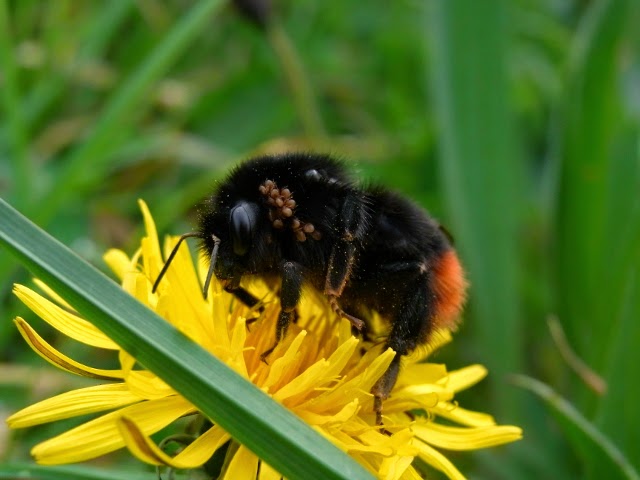Clare Gurton, local plant enthusiast, writer and proprietor of
Clare Gurton, local plant enthusiast, writer and proprietor of Plantwalk writes about the natural colours of Easter and what to look out for this spring.
"Yellow is the colour of Easter; this is accepted fact though quite why, no-one can say exactly, but many wildflowers are yellow at this time of year and maybe this plays a part.
Flowers have colours in order to attract pollinators; yellow seems predominant in spring probably because bees are the main pollinators at this time of year and they tend to respond to blues and yellows more than other colours. Also light conditions in spring are such that yellow is more easily recognized by insects.
.jpg) |
| Oil beetle on celandine |
Look out for Oil beetles which feed off yellow flowers like Dandelion and Lesser Celandine (and so pollinate them), which have a fascinating life-cycle involving a solitary bee. Also, look out for Bumble Bee queens, recently out of hibernation, hungry for pollen and nectar; often heard before they are seen as they search along the hedge banks for nesting sites.
Of the yellow-flowered plants that are around just now, Marsh Marigold and Opposite Leaved Golden Saxifrage are characteristic of our damp woodland habitats around Hartland. Both are associated with the boggy conditions typically found in woodland springs and flushes – habitats that are on the decline nationally due to drainage but luckily we still have some left here. Marsh Marigolds, or Kingcups, are in fact, a variety of buttercup specially adapted to living in damp, marshy conditions. This colourful and conspicuous plant is said to symbolize brilliance and has strong folklore associations and many different country names such as Mollyblobs, Water Caltrops, May Blobs, Water Dragon and Water Blabs.
Golden Saxifrage, by contrast is a tiny, delicate plant which grows close to the ground in carpets along damp woodland floors. Its yellow flowers are made up of four sepals but it has no petals. The variety that grows most commonly here is ‘Opposite’ Leaved Golden Saxifrage, as oppose to ‘Alternate’ Leaved Golden Saxifrage. The distinction being obvious from the name, but also the latter is a larger more robust plant that does not form mats. In France, Golden Saxifrage has been used as a salad plant for many years – the small leaves being thin and crisp. Here in England, years ago, it was prescribed for disorders of the spleen; its leaves were said to resemble the spleen and its scientific name bears witness; Chrysosplenium oppositifolium, ‘chrusos’ being Greek for gold and ‘splen’ for spleen.
See how many different yellow flowers you can count in the woods and lanes of the peninsular, or book a guided Plantwalk to learn more about all our wild flowers. www.plantwalk.co.uk."
Yellow!

.jpg)
.jpg)